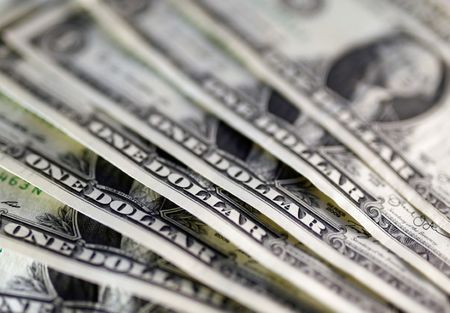Forex
Asia FX falls, dollar near 7-week high as Fed says no hurry to cut rates


© Reuters.
Investing.com– Most Asian currencies retreated on Thursday, while the dollar hovered near a seven-week high after the Federal Reserve kept interest rates steady and shot down expectations for a March rate cut.
Regional currencies were pressured chiefly by strength in the dollar, which shot up in overnight trade after the Fed’s comments. The and rose 0.2% each on Thursday, and were close to their highest levels since mid-December.
The was among the worst performers on Thursday, down 0.2% as data showed little improvement in a sluggish economic recovery. A showed that China’s manufacturing sector grew as expected in January, but its pace of growth now appeared to be slowing.
Separate data showed the country’s home sales plummeted in January, pointing to more pressure on a worsening property crisis.
The fell 0.1% following weaker-than-expected data for December.
The rose 0.2%, boosted chiefly by data showing grew more than expected in January. This also saw the country’s shrink less than expected.
Japanese yen an outlier as hawkish BOJ bets grow
The was a key outlier among its Asian peers, rising for a second straight session after a summary of opinions from the Bank of Japan’s January meeting showed policymakers actively discussing a pivot away from its ultra-dovish stance.
While the BOJ gave no direct indication on when it plans to begin tightening policy during the meeting, the summary indicated that a growing number of policymakers were now seeing more conditions being met for a pivot away from negative interest rates.
Higher Japanese interest rates will be a key point of support for the yen, which was battered by a widening gulf between local and U.S. rates over the past two years.
Fed downplays early rate-cut bets, markets now see May cuts
Fed Chair Jerome Powell said that recent stickiness in inflation will keep the central bank from carrying out any monetary loosening in the near-term. This saw traders largely scale back bets that the Fed will begin cutting interest rates by as soon as March 2024.
But Powell still noted much progress in the central bank’s fight against inflation, while also flagging continued resilience in the U.S. economy. His comments saw traders begin pricing in the possibility that the central bank will begin cutting rates from May 2024.
Traders were also pricing in the notion that a delay in the Fed’s interest rates will see the bank carry out monetary loosening more aggressively later in 2024, pointing to deeper interest rate cuts.
Goldman Sachs analysts said they still expect five rate cuts in 2024, beginning from May. The shows traders pricing in an over 60% chance for a 25 basis point cut in May.

 Forex3 years ago
Forex3 years agoForex Today: the dollar is gaining strength amid gloomy sentiment at the start of the Fed’s week

 Forex3 years ago
Forex3 years agoUnbiased review of Pocket Option broker

 Forex3 years ago
Forex3 years agoDollar to pound sterling exchange rate today: Pound plummeted to its lowest since 1985

 Forex3 years ago
Forex3 years agoHow is the Australian dollar doing today?

 Cryptocurrency3 years ago
Cryptocurrency3 years agoWhat happened in the crypto market – current events today

 World3 years ago
World3 years agoWhy are modern video games an art form?

 Commodities3 years ago
Commodities3 years agoCopper continues to fall in price on expectations of lower demand in China

 Economy3 years ago
Economy3 years agoCrude oil tankers double in price due to EU anti-Russian sanctions





















